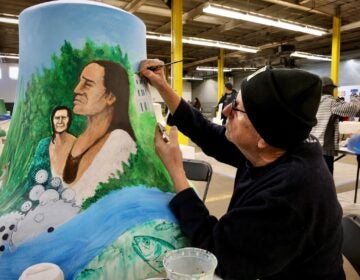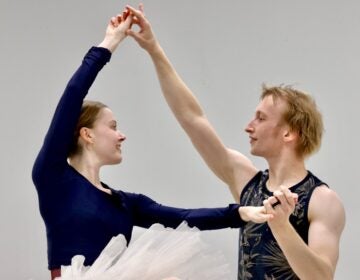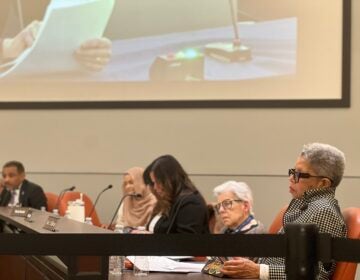Artists explore and discuss using found materials to make works of art
-
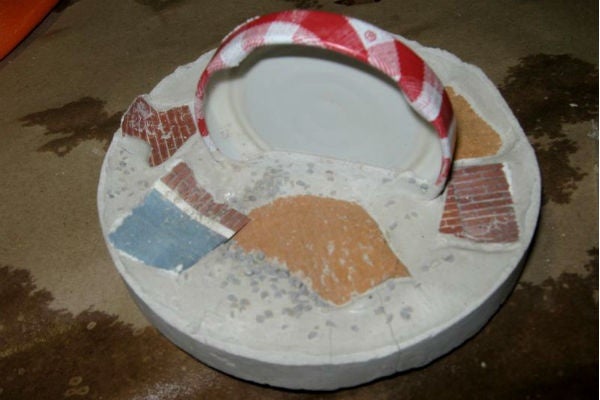
<p>An example of a finished piece. (Alaina Mabaso/for NewsWorks)</p>
-
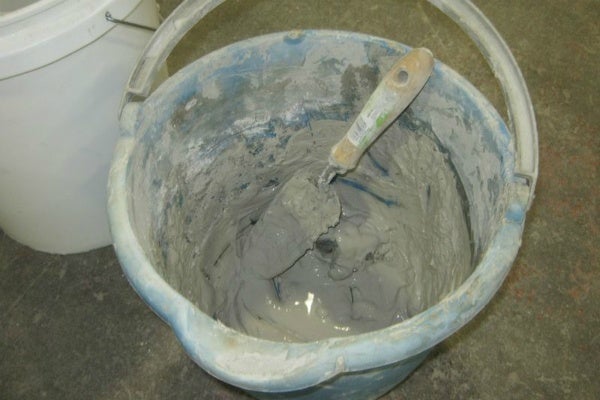
<p>Cement formed the foundation of the workshop pieces. (Alaina Mabaso/for NewsWorks)</p>
-
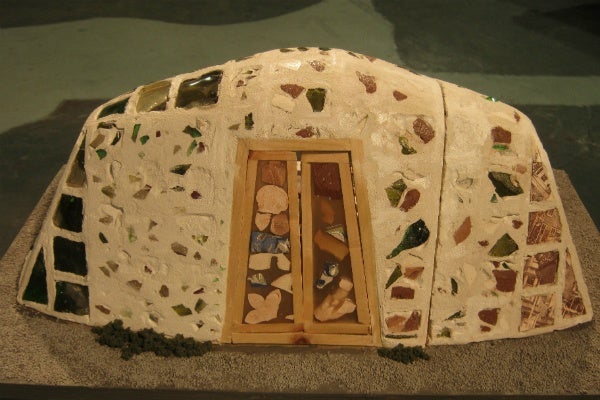
<p>A tiny model of the finished RUST structure. (Alaina Mabaso/for NewsWorks)</p>
-
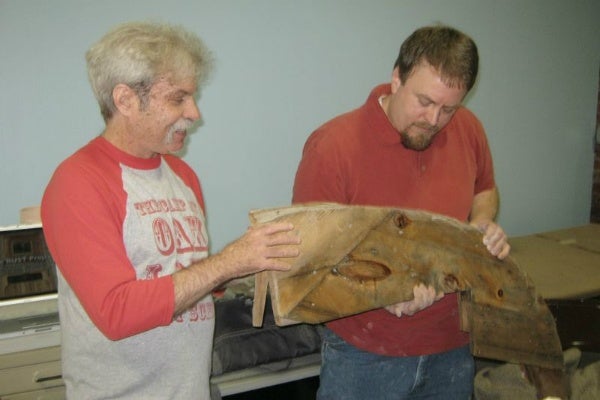
<p>Andy Walkerr (left) and Andy Heisey (right) show and discuss a piece of wood from RUST. (Alaina Mabaso/for NewsWorks)</p>
-

<p>Louise Polis made a piece to remind her of the desert. (Alaina Mabaso/for NewsWorks)</p>
-
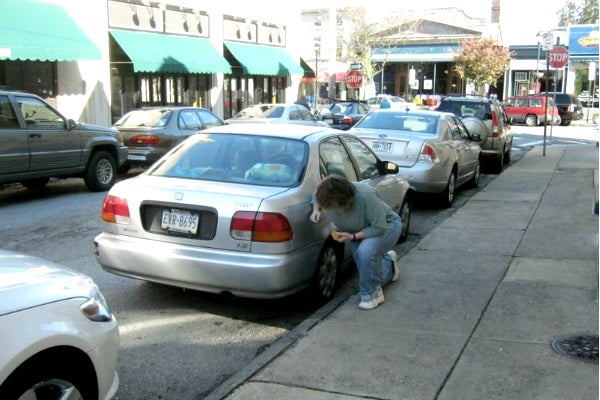
<p>A workshop participant searches for materials. (Alaina Mabaso/for NewsWorks)</p>
-
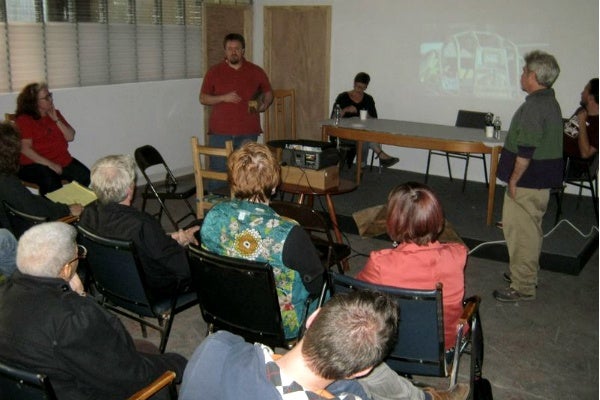
<p>After the workshop, there was a special panel on urban renewal through art. (Alaina Mabaso/for NewsWorks)</p>
-
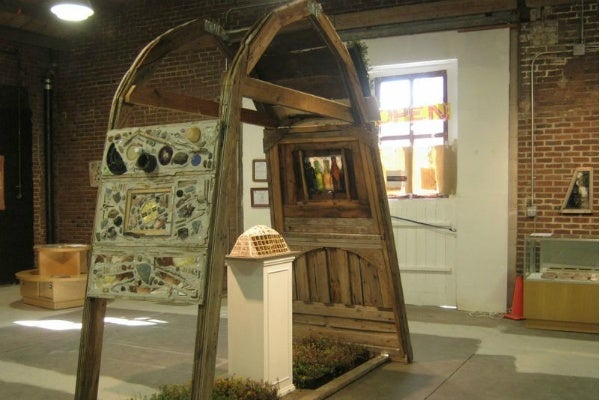
<p>A view of the partially assembled RUST inside the Mt. Airy Arts Garage. (Alaina Mabaso/for NewsWorks)</p>
-
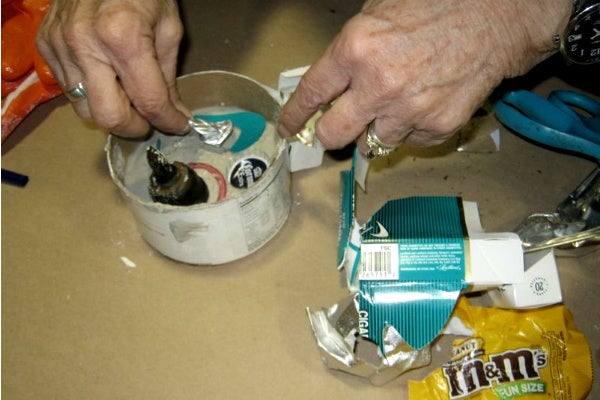
<p>Participants used found materials to make their own sculptures. (Alaina Mabaso/for NewsWorks)</p>
On any other morning, a table covered with empty cereal boxes, egg cartons, Halloween candy wrappers, bottle caps and dismembered cigarette boxes would be a disgraceful way to greet guests. But on Sunday at the Mt. Airy Art Garage, trash was the medium for a special arts workshop inspired by Andy Walker and Andy Heisey’s Renewed Urban Studio Tent (RUST).
Walker and Heisey presented RUST, a structure one year in the making, on a South Broad Street lot owned by the University of the Arts late last summer. It’s made entirely out of found materials, including reclaimed wood, abandoned glass bottles, slag cement, and, yes, a skin of trash collages pressed into trays of cement.
Made to be disassembled, transported and reassembled into slightly new incarnations wherever it goes, RUST’s debut at MAAG is its third incarnation this year.
The pair designed RUST to draw attention to the potential of building with recycled materials, especially in a city plagued by tens of thousands of abandoned buildings (whose materials may one day end up in landfills), and the role of the arts in urban revitalization.
“You can build a house from the junk you find around your yard in one year’s time,” Walker told workshop participants.
For his part, Heisey repeatedly referred to the found-materials building process as “Frankensteining,” in which old, weak pieces of wood are painstakingly combined to create a new, strong structure.
A ‘weird’ artistic process
On Saturday night, MAAG hosted the official opening of the exhibit, including a stripped-down version of RUST and a selection of artwork, including paintings, collage and photography that were created inside the structure during its time on Broad Street.
The following day, about ten MAAG participants tried making their own tiny versions of found-object collages like the ones covering RUST. Everyone received an empty cocktail nuts can, its cardboard sides cut down to about half-height and the inside filled with a thick, shiny layer of pale grey cement.
“Now walk out on the street and find things that would be interesting,” Heisey told the artists.Donning orange-palmed work gloves, they fanned out to Mt. Airy Avenue and onto nearby Germantown Avenue, bending frequently to peer at debris at the curb and select appealing pieces.
After a few minutes, they returned to the tables inside MAAG and began pressing their objects into their cement rounds.
Heisey, never squeamish, used an old cigarette butt for the nose of a friendly face whose eyes were a set of iPod earbuds he found smashed in the street. Others used bits of string, sticks, leaves and myriad small bits of trash for everything from flat, minimalist collages to tiny 3-D riots that obscured the cement.
Participant Louise Polis preferred a “dimensional” look, incorporating a small bit of red felt fringe, a black plastic zip-tie secured in a small arch, and sticks and leaves. She explained that her piece was a tribute to a prairie or a desert, which she experienced years ago on a memorable three-day drive when she moved to Houston from Santa Barbara.
The arched zip-tie reminded her of bridge-like rock formations and a blue-and-white cardboard check-mark, cut from a cereal box, represented a highway.
“Thank you so much for letting me show off this weird process to you,” said Heisey.
When the cement in each piece hardened, the artists peeled the encasing cardboard away to finish their pieces.
An entree to making art
That afternoon, MAAG welcomed Walker and Heisey back along with Gary Steuer, Chief Cultural Officer for the City of Philadelphia, for a special discussion panel on urban renewal through the arts titled “Artists Taking Back Philadelphia – Brick By Brick.”
Joining them were Shari Hersh of the Mural Arts Program and Amsterdam-born artist Dre Urhahn of the Mural Arts-sponsored Philly Painting initiative, which now decorated buildings at the corner of Germantown and Lehigh Avenues.
Panelists addressed the ways many of Philadelphia’s citizen-artists eschew an “ivory tower” philosophy dedicated to elite galleries, and put their talents to use improving the community.
Heisey emphasized that projects like RUST don’t just clean the spaces they’re in by incorporating abandoned materials. They also “beautify” the trash itself and encourage people who would otherwise be nervous to try their hand at the arts.
“You put junk [as an art medium] in front of people – not a pen or a pencil – and people don’t get intimidated,” said Walker.
The exhibit and sale of artists’ RUST pieces is going on at MAAG through December 7t, and Walker and Heisey are already planning RUST’s next incarnation, with the goal of a New York City installation.
WHYY is your source for fact-based, in-depth journalism and information. As a nonprofit organization, we rely on financial support from readers like you. Please give today.


